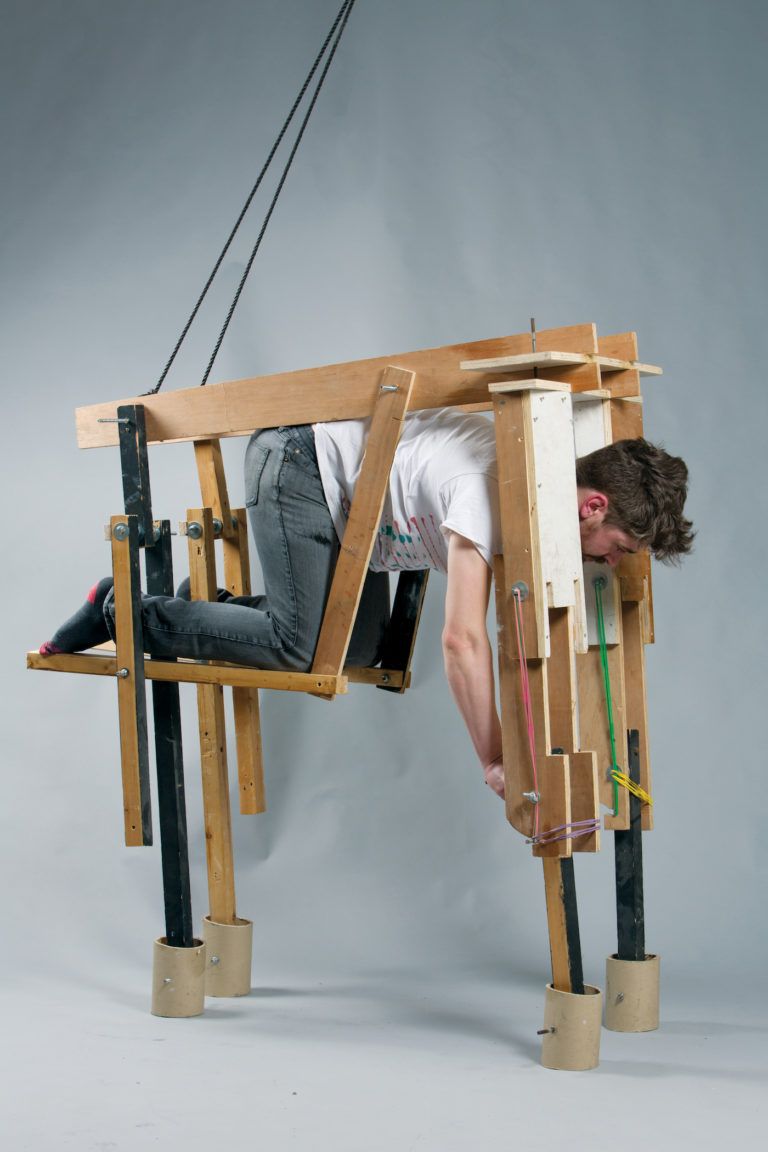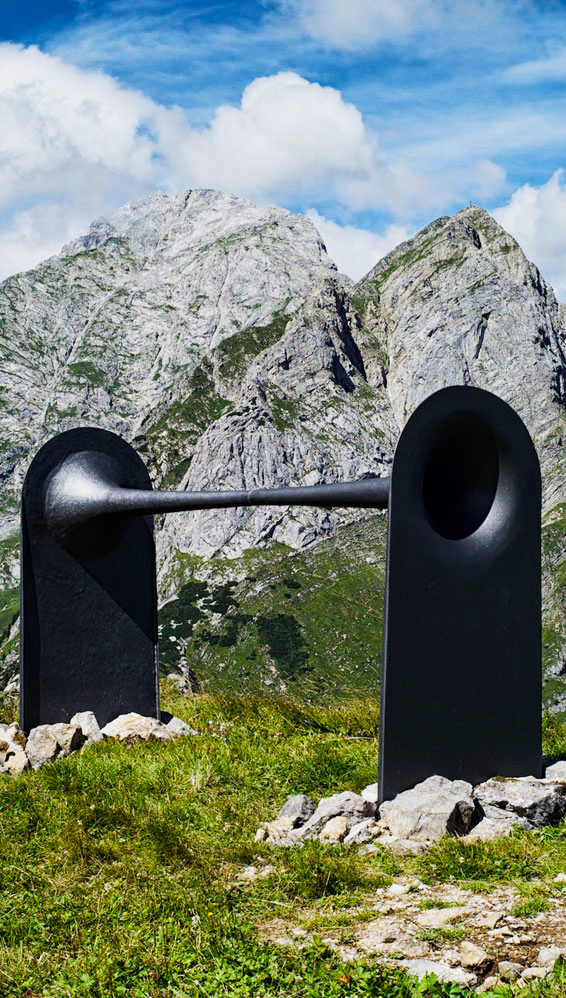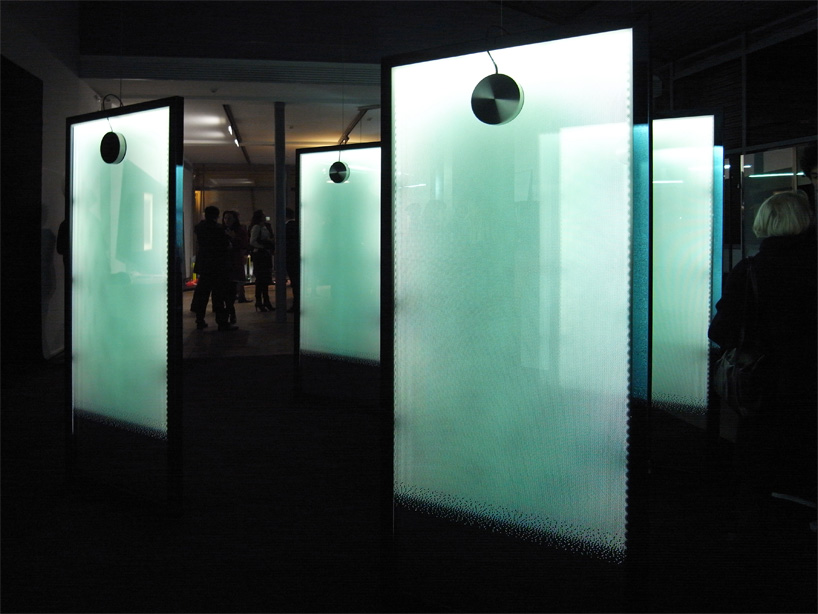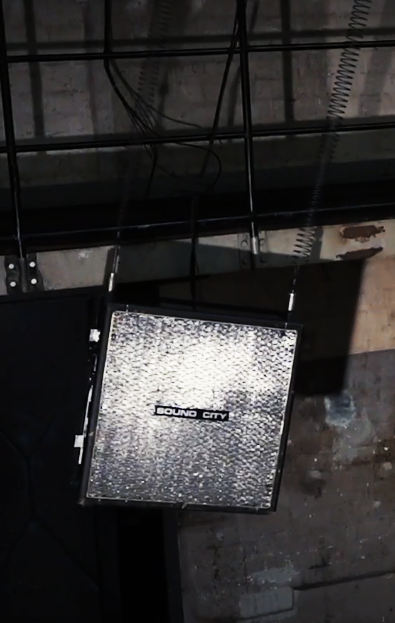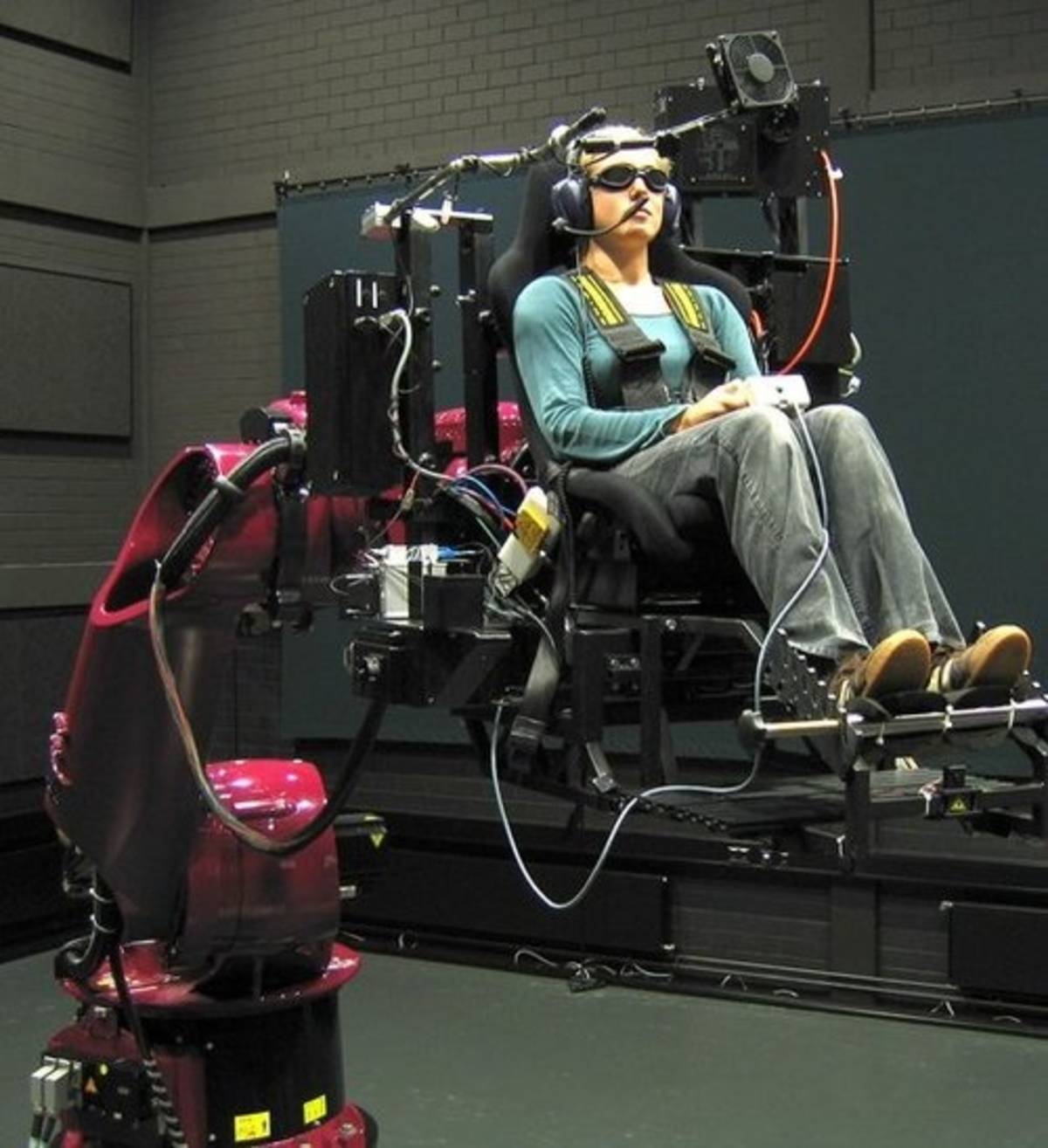sound cloud
London-based designer kazuhiro yamanaka has created the ‘sound cloud’ a light-emitting quantum glass speaker system installation for saazs ‘a glass house’ program. the structure is composed of five interactive monolithic glass panels, formed with the intention of modelling the integration of innovative glass within architecture and design. the sound and light radiating from ‘sound cloud’ shift in unison, their synchronization may be altered by the viewer as they adjust their aural and visual experience by means of a touch-screen controller.
yamanaka aspired for the visitors to ‘be able to hear the sound move from one to another, jumping back and forth and echoing from the panels.’
a sound module is attached to each panel. as it vibrates,the three layers of glass move at a frequency, which creates optimum sound quality. the sound for the installation was developed by the france-based sound designer, gling-glang. yamanaka and gling-glang devised a soundscape by which ‘sound cloud’ visitors were able to sense the sculptural construction of the music in walking through the installation’s glass-paneled pathway.
the glass is outfitted with a light-emitting system known as ‘LED in glass’, invented by quantum glass. through this technology, the panels become a source of light. the ‘sound cloud’ is illuminated as the LED bars are fitted around the edge of the panel in order to direct beams of light through the edge of the extra clear glass sheet. as a result, light refraction occurs from the front side by means of a white enamel screen print on the opposite side.
yamanaka chose to slightly obscure the brightness of the glass sound system by creating a thin layer from millions of light dots, culminating in a cloud-like shape.
